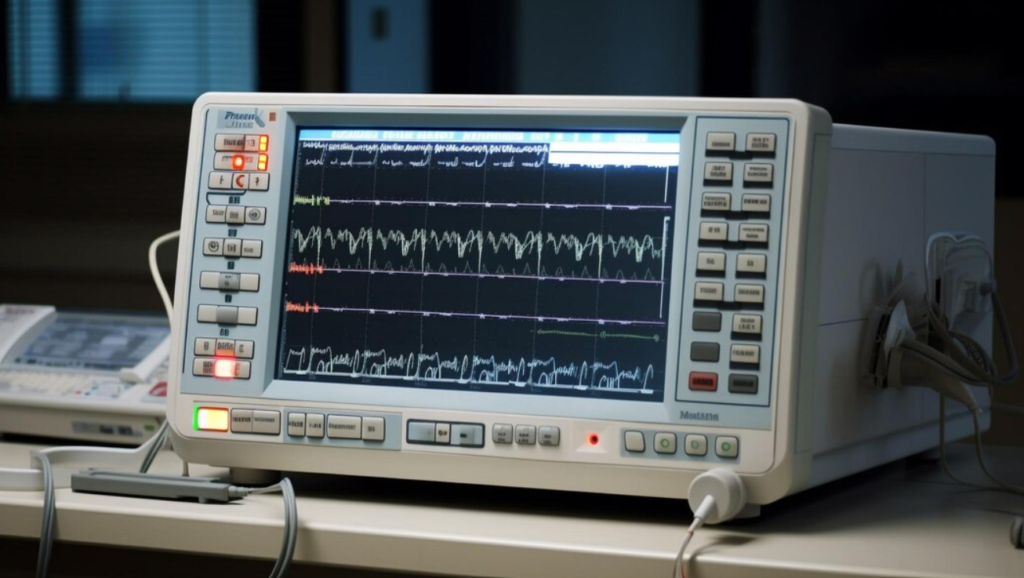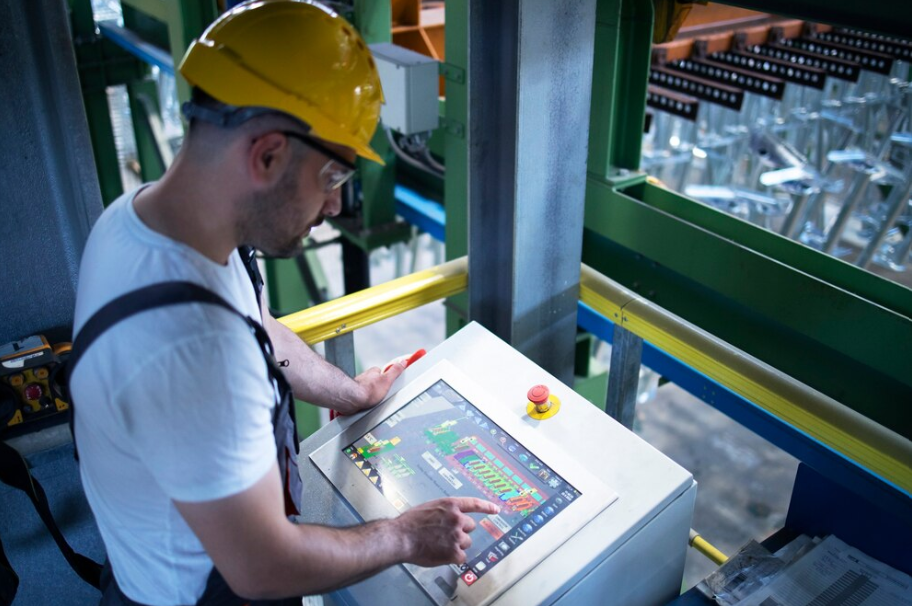Pulsamento: Discover its Importance in Nature and Technology
Introduction
Pulsamento describes a rhythmic or cyclical process seen in both nature and technology. Derived from the Latin word ‘pulsare,’ meaning to beat or pulse, this concept is integral to understanding various natural and technological processes. Its applications span numerous fields, from biological rhythms like heartbeats to technological innovations in communication and energy systems. Pulsamento represents the essential patterns of movement and change that define both living organisms and engineered systems, illustrating the fundamental nature of rhythm in our world.
Table of Contents
Origin and Etymology
The term pulsamento originates from the Latin ‘pulsare,’ historically used to describe the heartbeat. Over centuries, its meaning has broadened to encompass a variety of rhythmic phenomena across different languages and contexts. Initially rooted in medical terminology, it now extends to various scientific and technological domains. The evolution of the term reflects the expanding understanding of rhythmic processes and their significance in multiple disciplines. From ancient times to the modern era, pulsamento has maintained its relevance, continuously adapting to new discoveries and applications.
Importance in Various Fields

Pulsamento is crucial across numerous disciplines, highlighting its versatility and fundamental importance. In biology, it explains vital processes such as heartbeats and brain waves, essential for maintaining life and health. Physics uses pulsamento to describe wave phenomena, fundamental to understanding sound, light, and other forms of energy transmission. In technology, pulsamento underpins the functioning of communication devices, medical equipment, and many everyday gadgets. Economic theories utilize pulsamento to predict market cycles and inform financial strategies. The broad range of its applications underscores pulsamento’s role as a foundational principle that drives both natural and technological advancements.
Historical Context of Pulsamento
In ancient times, pulsamento was primarily understood through the lens of medicine and astronomy. Greek and Roman physicians used it to monitor heartbeats and diagnose diseases, recognizing the importance of rhythmic patterns in maintaining health. In astronomy, pulsamento described the regular movements of celestial bodies, essential for developing early calendars and navigation systems. These early applications highlight the significance of rhythmic understanding in both health and the organization of time, which were crucial for societal development.
Medieval Applications
During the medieval period, the concept of pulsamento expanded into philosophy and the development of mechanical clocks. Scholars of the time viewed natural rhythms as part of a divine order, integrating them into their philosophical and theological frameworks. The invention of mechanical clocks, based on oscillatory movements, marked a significant advancement in timekeeping. These clocks improved the accuracy and reliability of time measurement, reflecting the medieval fascination with order and precision. The period’s philosophical and technological advancements demonstrate the continued importance of understanding and utilizing rhythmic patterns.
Modern Developments and Discoveries
The Industrial Revolution saw pulsamento principles applied in steam engines and electrical generators, revolutionizing industry and transportation. In the 20th and 21st centuries, pulsamento became integral to digital technology, medical imaging, and environmental monitoring. Innovations such as renewable energy systems and advanced communication technologies continue to rely on pulsamento. These developments illustrate how understanding rhythmic processes can lead to groundbreaking advancements, driving progress in various fields. The continuous exploration and application of pulsamento principles have significantly shaped modern society, contributing to technological advancements and improved quality of life.
Scientific Principles of Pulsamento
In physics, pulsamento involves repetitive motion or oscillation, evident in phenomena like a pendulum’s swing or sound waves. These processes are often described using sinusoidal functions, which capture their periodic nature. Understanding these principles is crucial for designing efficient mechanical and electronic systems. Oscillatory motions are fundamental to many physical systems, providing a basis for various technologies, from simple mechanical devices to complex electronic circuits. The principles of pulsamento in physics highlight the universal nature of rhythmic processes and their importance in the functioning of both natural and engineered systems.
Biological Aspects of Pulsamento

In biology, pulsamento is observed in essential processes such as heartbeats, circadian rhythms, and brain waves. These rhythms are crucial for maintaining health and homeostasis, regulating vital functions like sleep, metabolism, and cognitive activities. The study of biological rhythms has led to significant medical advancements, including treatments for sleep disorders, mood regulation, and optimized drug delivery schedules. Understanding pulsamento in biological contexts underscores its role in sustaining life and well-being, demonstrating how rhythmic patterns are intrinsic to living organisms.
Chemical Reactions Involved
In chemistry, oscillating reactions like the Belousov-Zhabotinsky reaction exemplify how chemical systems can exhibit rhythmic behavior. These reactions provide insights into chemical kinetics and thermodynamics, revealing the dynamic nature of chemical processes. Understanding these oscillations has applications in materials science, biochemistry, and environmental science, enabling the development of new materials, improved chemical processes, and better environmental monitoring techniques. The study of pulsamento in chemical reactions highlights the interconnectedness of rhythmic processes across different scientific domains, emphasizing their fundamental role in both natural and synthetic systems.
Pulsamento in Technology
Pulsamento has led to numerous technological innovations that enhance everyday life. In electronics, oscillators generate clock signals essential for digital devices, ensuring their synchronized operation. Pulse width modulation (PWM) is employed to control the speed of motors, the brightness of lights, and power delivery, providing efficient and precise control. These applications demonstrate how understanding and leveraging rhythmic principles can lead to more efficient and reliable technological solutions, illustrating the practical benefits of pulsamento in various technological fields.
Pulsamento in Communication Technologies
Communication technologies heavily rely on pulsamento to function effectively. Devices like radios and mobile phones use rhythmic principles to transmit and receive electromagnetic waves, facilitating wireless communication. Modulation techniques, such as frequency modulation (FM) and amplitude modulation (AM), encode and decode information within these waves, enabling the transmission of data over long distances. The success of modern communication systems hinges on the precise application of pulsamento, highlighting its critical role in connecting people and information worldwide.
Role in Medical Equipment

Medical technology utilizes pulsamento in various diagnostic and therapeutic tools. Electrocardiograms (ECGs) and electroencephalograms (EEGs) measure the heart’s and brain’s electrical activity, respectively, using rhythmic signals to monitor health conditions. Ultrasound imaging employs high-frequency sound waves to create detailed images of internal body structures, aiding in diagnosis and treatment planning. Pacemakers use pulsamento principles to regulate heartbeats, providing life-saving support for patients with heart rhythm disorders. These applications underscore the importance of rhythmic understanding in advancing medical science and improving patient care.
Cultural Significance of Pulsamento

Pulsamento has inspired art and literature, influencing the creation of rhythmic patterns in poetry, music, and visual arts. In music, rhythms create a structured flow that can evoke emotions and convey messages. Poetry often uses meter and rhythm to enhance its aesthetic appeal and emotional impact. Visual arts incorporate rhythmic elements through patterns and repetition, creating dynamic and engaging pieces. The cultural significance of pulsamento is evident in how it enhances artistic expression and connects with audiences on a deeper level, reflecting the inherent rhythms of human experience.
Cultural Practices and Rituals
Cultural practices and rituals often incorporate rhythmic elements to foster unity and enhance their impact. Drumming circles, dance rituals, and meditation sessions use rhythmic beats to synchronize participants’ movements and create a shared experience. These practices aim to align individuals’ internal rhythms, promoting a sense of connection and community. The use of pulsamento in cultural rituals highlights its role in enhancing social bonds and creating meaningful experiences, demonstrating its deep-rooted significance in human culture.
Representation in Media
In media, pulsamento is used to convey themes of time, life cycles, and the nature of existence. Films and literature employ rhythmic motifs to enhance storytelling and create emotional resonance. Editing rhythms in visual media influence the pace and mood of scenes, guiding viewers’ perceptions and emotions. The use of pulsamento in media underscores its fundamental role in shaping human perception and communication, highlighting its pervasive influence across different forms of expression.
Pulsamento in Everyday Life
Pulsamento is integral to many household items, often operating unnoticed but essential for their functionality. Clocks and watches, for example, use oscillatory mechanisms like pendulums, balance wheels, or quartz crystals to keep accurate time. Household appliances such as washing machines and dishwashers operate on cycles regulated by pulsamento principles, ensuring efficient performance. Heating and cooling systems, including thermostats, use feedback loops to maintain desired temperatures, cycling on and off to optimize energy use. Even lighting systems employ pulsamento through dimmer switches that adjust brightness levels using pulse width modulation.
Health and Wellness

In health and wellness, pulsamento plays a significant role in promoting physical and mental well-being. Fitness trackers monitor heart rates, providing real-time feedback on physical activity and overall health. These devices help users maintain optimal exercise intensity, track progress, and avoid overexertion. Breathing exercises, based on rhythmic inhalation and exhalation, are used in practices like yoga and meditation to induce relaxation and mental clarity. Techniques such as rhythmic breathing and progressive muscle relaxation aid in stress management, improving focus, and enhancing emotional balance. Additionally, therapies like sound healing utilize rhythmic sounds and vibrations to create calming environments, supporting stress relief and mental well-being.
Educational Tools
Educational tools leverage the principles of pulsamento to enhance learning and engagement. Interactive learning apps use rhythmic patterns to teach subjects such as music and languages, reinforcing memory and understanding through repetition. For instance, musical training involves recognizing and reproducing rhythms, which enhances cognitive abilities and auditory skills. Language learning apps might use rhythmic repetition of vocabulary and phrases to aid retention. Educational toys and games for young children often incorporate rhythmic elements to develop motor skills, coordination, and cognitive abilities. The use of rhythm in education underscores its effectiveness in facilitating learning and skill development, making complex concepts more accessible and engaging.
Pulsamento and the Environment

Understanding pulsamento is crucial for studying ecological systems and their dynamic processes. Natural rhythms, such as seasonal changes and animal migration patterns, are essential for maintaining ecological balance. By studying these rhythms, ecologists can better understand the interactions between different species and their environments, informing conservation efforts and sustainable practices. For instance, the rhythmic blooming of flowers and the migration of pollinators are tightly interlinked, ensuring the reproduction of plants and the survival of pollinator species. Recognizing these natural cycles helps in developing strategies to protect ecosystems and maintain biodiversity.
Sustainable Practices
Sustainable practices often incorporate pulsamento principles to mimic natural cycles and optimize resource use. Permaculture, for example, designs agricultural systems that work with natural rhythms, promoting biodiversity and soil health. Techniques such as crop rotation and companion planting follow seasonal cycles, enhancing productivity and reducing the need for chemical inputs. Renewable energy systems, including solar and wind power, harness natural rhythms of sunlight and wind patterns to generate electricity sustainably. Smart grids use pulsamento principles to balance energy supply and demand, improving efficiency and reducing waste. These practices demonstrate how aligning human activities with natural rhythms can promote environmental sustainability and resilience.
Future Trends in Environmental Conservation
Future trends in environmental conservation are likely to rely increasingly on pulsamento principles to address global challenges. Advanced ecological monitoring systems will track rhythmic patterns in ecosystems, providing early warnings of disruptions and aiding in proactive conservation efforts. Climate models that incorporate pulsamento principles will offer more accurate predictions of weather patterns and climate change impacts, informing mitigation and adaptation strategies. Innovations in renewable energy technologies will continue to leverage natural rhythms for efficient power generation, storage, and distribution. By understanding and applying pulsamento, future conservation efforts can enhance the sustainability and resilience of both natural and human systems.
Economic Impact of Pulsamento
In economics, pulsamento describes the cyclical nature of market dynamics, including periods of growth, recession, and recovery. Understanding these cycles is essential for making informed financial decisions and developing effective economic policies. Business cycles, characterized by fluctuations in economic activity, influence investment strategies, production levels, and employment rates. Economists use rhythmic patterns in data analysis to predict market trends and guide policy-making. By recognizing the inherent rhythms of economic activity, businesses and policymakers can better navigate economic uncertainties and capitalize on opportunities.
Industry Applications

Industries utilize 𝚙𝚞𝚕𝚜𝚊𝚖𝚎𝚗𝚝𝚘 to optimize processes and improve efficiency. In manufacturing, rhythmic production schedules ensure a steady flow of goods, reducing downtime and maximizing output. Just-in-time inventory systems rely on synchronized supply chains to minimize stock levels and reduce costs. Irrigation systems in agriculture use rhythmic patterns to deliver water precisely when and where it’s needed, enhancing crop yields and conserving resources. In the energy sector, alternating current (AC) electricity, based on 𝚙𝚞𝚕𝚜𝚊𝚖𝚎𝚗𝚝𝚘, facilitates efficient power transmission over long distances. These applications demonstrate how rhythmic principles can enhance operational efficiency and productivity across various industries.
Global Economic Influence
Globally, 𝚙𝚞𝚕𝚜𝚊𝚖𝚎𝚗𝚝𝚘 influences trade patterns, investment cycles, and economic policies. International trade often follows rhythmic patterns, driven by seasonal demands, production cycles, and geopolitical events. Understanding these rhythms helps businesses and governments anticipate changes in trade flows and adapt strategies accordingly. Investment cycles, characterized by periods of rapid growth and contraction, guide financial markets and impact global capital allocation. Recognizing these cycles aids in managing risks and optimizing returns. Economic policies, informed by rhythmic analyses, aim to stabilize markets, promote growth, and mitigate the impacts of economic fluctuations. By acknowledging the global rhythms of economic activity, stakeholders can enhance resilience and foster sustainable development.
Future Prospects of Pulsamento
Emerging technologies are poised to harness 𝚙𝚞𝚕𝚜𝚊𝚖𝚎𝚗𝚝𝚘 for innovative solutions across various fields. Quantum computing, for instance, leverages oscillatory behavior of quantum bits (qubits) to perform complex calculations at unprecedented speeds. This technology has the potential to revolutionize fields such as cryptography, material science, and artificial intelligence. In biotechnology, researchers are exploring rhythmic patterns in biological processes to develop advanced treatments and therapies. For example, chronotherapy tailors medication schedules to align with patients’ biological rhythms, improving efficacy and reducing side effects. These advancements highlight the potential of 𝚙𝚞𝚕𝚜𝚊𝚖𝚎𝚗𝚝𝚘 to drive future technological breakthroughs.
Research and Development
Ongoing research into pulsamento continues to uncover new applications and deepen our understanding of rhythmic processes. Interdisciplinary collaboration among physicists, biologists, chemists, and engineers is key to unlocking the full potential of 𝚙𝚞𝚕𝚜𝚊𝚖𝚎𝚗𝚝𝚘. Innovations in nanotechnology, for instance, are exploring oscillatory mechanisms at the molecular level to develop new materials and devices with unique properties. In medicine, research into neural oscillations is advancing our understanding of brain function and neurological disorders, paving the way for new diagnostic and therapeutic approaches. Environmental science is leveraging rhythmic data to improve ecosystem monitoring and conservation strategies. The continuous exploration of 𝚙𝚞𝚕𝚜𝚊𝚖𝚎𝚗𝚝𝚘 promises to yield significant scientific and technological advancements.
Potential Challenges and Solutions
While the future of 𝚙𝚞𝚕𝚜𝚊𝚖𝚎𝚗𝚝𝚘 holds great promise, several challenges must be addressed to ensure its successful implementation and widespread adoption. Ensuring accessibility and affordability of 𝚙𝚞𝚕𝚜𝚊𝚖𝚎𝚗𝚝𝚘-based technologies is crucial for equitable benefits. Addressing issues of scalability and sustainability is also essential, particularly in the context of environmental impacts and resource use. Ethical considerations, including data privacy and the potential for technological misuse, must be carefully managed. Collaborative efforts among researchers, industry leaders, policymakers, and communities are necessary to develop solutions that address these challenges. By fostering a holistic and inclusive approach, the potential of 𝚙𝚞𝚕𝚜𝚊𝚖𝚎𝚗𝚝𝚘 can be fully realized for the benefit of society.
Conclusion
P𝚞𝚕𝚜𝚊𝚖𝚎𝚗𝚝𝚘 is a fundamental concept influencing various fields, from biology and physics to technology and economics. Its applications in everyday life and sustainability underscore its practical significance. The exploration of rhythmic processes has led to numerous innovations, enhancing our understanding of the natural world and driving technological advancements. P𝚞𝚕𝚜𝚊𝚖𝚎𝚗𝚝𝚘’s role in medical diagnostics, communication technologies, and environmental conservation highlights its broad impact and potential for future development.
FAQs
What is Pulsamento?
Pulsamento refers to rhythmic or cyclical processes observed in both natural and technological systems. Derived from the Latin word ‘pulsare,’ meaning to beat or pulse, it encompasses various rhythmic phenomena, from biological rhythms like heartbeats to technological processes in communication and energy systems.
How is Pulsamento Applied in Technology?
Pulsamento is integral to many technological advancements. In electronics, oscillators generate clock signals for digital devices. In communication, it helps transmit and receive electromagnetic waves. Medical equipment like ECGs and EEGs utilize 𝚙𝚞𝚕𝚜𝚊𝚖𝚎𝚗𝚝𝚘 to measure the body’s rhythmic signals, aiding in diagnosis and treatment.
Why is Pulsamento Important in Biology?
In biology, 𝚙𝚞𝚕𝚜𝚊𝚖𝚎𝚗𝚝𝚘 is crucial for understanding vital processes such as heartbeats, circadian rhythms, and brain waves. These rhythms regulate essential functions like sleep, metabolism, and cognitive activities, playing a key role in maintaining health and homeostasis.
What are Some Historical Uses of Pulsamento?
Historically, 𝚙𝚞𝚕𝚜𝚊𝚖𝚎𝚗𝚝𝚘 was used in medicine to monitor heartbeats and diagnose diseases. In astronomy, it described the regular movements of celestial bodies. During the medieval period, it influenced the development of mechanical clocks and philosophical ideas about natural order.
How Does Pulsamento Influence Art and Literature?
Pulsamento inspires rhythmic patterns in art and literature. In music, it creates structured flow and emotional impact. Poetry uses meter and rhythm to enhance its appeal. Visual arts incorporate rhythmic elements through patterns and repetition, creating dynamic and engaging pieces.
Can Pulsamento Help with Environmental Conservation?
Yes, 𝚙𝚞𝚕𝚜𝚊𝚖𝚎𝚗𝚝𝚘 helps in understanding ecological systems and their dynamic processes. Studying natural rhythms, such as seasonal changes and animal migrations, aids in developing conservation strategies and sustainable practices. Renewable energy systems also leverage natural rhythms for efficient power generation.
What Are the Economic Implications of Pulsamento?
In economics, 𝚙𝚞𝚕𝚜𝚊𝚖𝚎𝚗𝚝𝚘 describes market cycles, influencing financial decisions and policies. It helps predict market trends, optimize production schedules, and enhance efficiency in industries. Understanding these rhythms aids in navigating economic uncertainties and capitalizing on opportunities.
How is pulsamento applied in everyday life?
P𝚞𝚕𝚜𝚊𝚖𝚎𝚗𝚝𝚘 is present in many aspects of daily life, often operating behind the scenes. Common applications include the timing mechanisms in clocks and watches, the cycles of household appliances like washing machines and dishwashers, and the regulation of heating and cooling systems.
If you found our content helpful don’t forget to share it on your social media: Twitter
More Articles: Home




